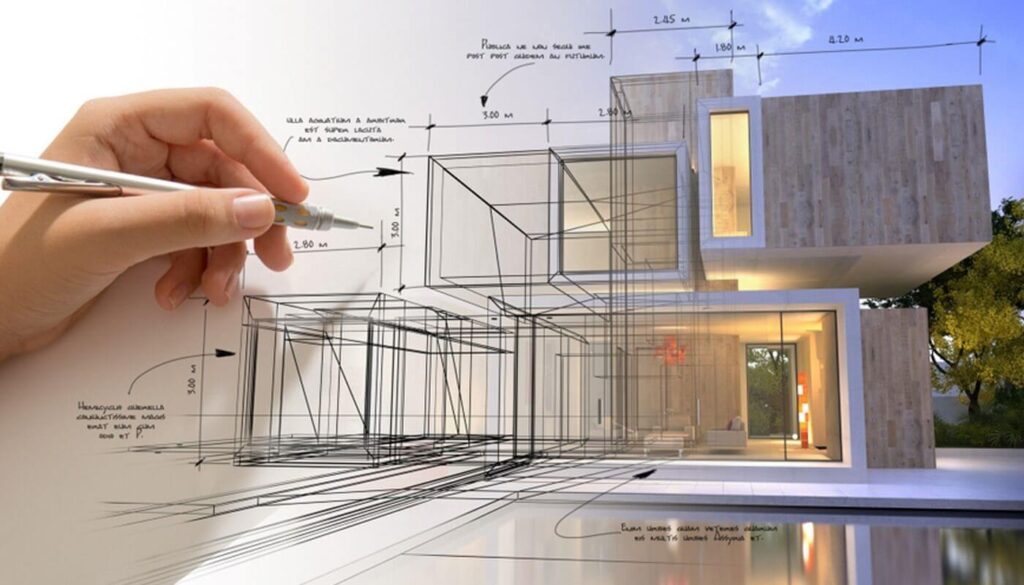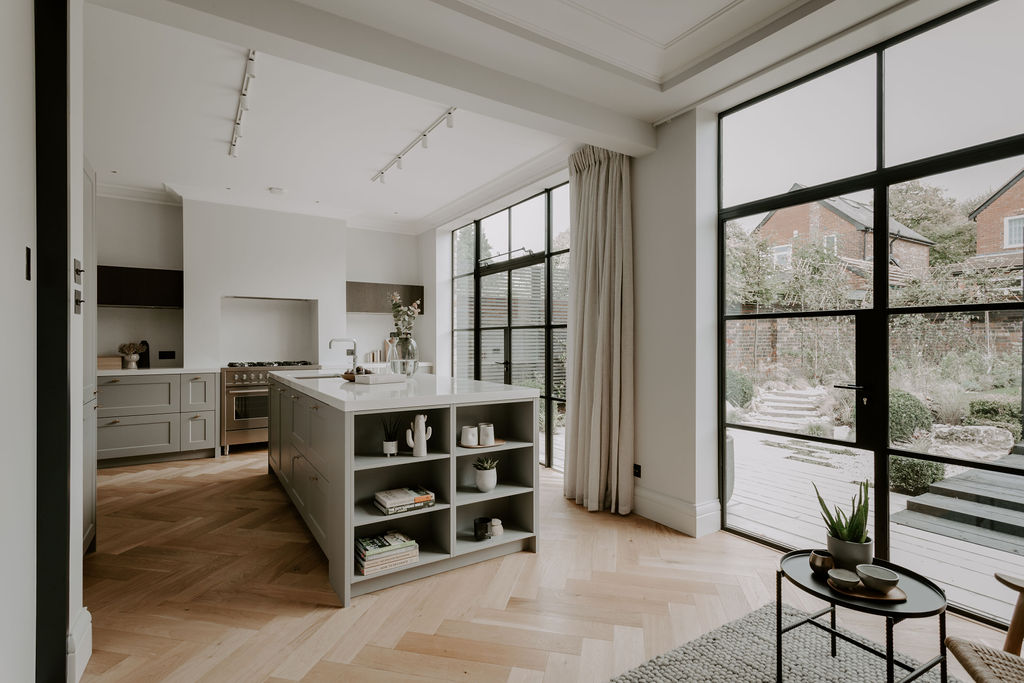The Art of Balance: How Interior Design and Home Architect Collaborate for Stunning Results
In the realm of home design, striking a balance between aesthetic appeals and performance is no tiny feat. This fragile stability is attained via the unified cooperation between interior designers and architects, each bringing their unique knowledge to the table. Stay with us as we explore the intricacies of this joint procedure and its transformative effect on home style.
Comprehending the Core Differences In Between Interior Decoration and Home Architecture
While both Interior Design and home architecture play essential roles in developing cosmetically pleasing and practical rooms, they are naturally different disciplines. Home architecture largely concentrates on the structural aspects of the home, such as building codes, security regulations, and the physical building and construction of the room. It deals with the 'bones' of the framework, collaborating with spatial dimensions, load-bearing walls, and roofing system layouts. On the various other hand, Interior Design is extra worried with improving the visual and sensory experience within that structure. It entails choose and organizing furniture, picking color systems, and integrating decorative elements. While they function in tandem, their roles, duties, and areas of competence diverge dramatically in the development of a harmonious home setting.
The Harmony In Between Home Architecture and Interior Decoration
The harmony in between home architecture and Interior Design exists in a common vision of design and the improvement of functional aesthetics. When these two areas straighten sympathetically, they can transform a living area from ordinary to amazing. This collaboration requires a deeper understanding of each self-control's concepts and the capacity to create a cohesive, cosmetically pleasing setting.
Unifying Design Vision
Combining the vision for home design and Interior Design can develop a harmonious home that is both practical and cosmetically pleasing. The equilibrium starts with an incorporated frame of mind; designers and indoor developers collaborate, each bringing their know-how. This unison of concepts creates the layout vision, a plan that overviews the task. This common vision is essential for consistency throughout the home, guaranteeing a fluid transition from exterior architecture to interior spaces. It promotes a synergistic method where architectural components complement Interior Design elements and the other way around. The result is a cohesive home that shows the property owner's personality, way of life, and taste. Therefore, unifying the style vision is critical in mixing design and Interior Design for spectacular results.
Enhancing Functional Looks
Exactly how does the harmony between home style and Interior Design boost practical aesthetics? This harmony enables the creation of rooms that are not only visually enticing yet also easily usable. Designers prepared with their architectural layout, making sure that the space is reliable and useful. The indoor developer then matches this with thoroughly picked elements that boost the visual appeals without endangering the functionality. This harmonious cooperation can lead to homes that are both beautiful and liveable. As an example, a designer could design a house with large windows and high ceilings. The interior designer can then highlight these features with large drapes and high plants, specifically, thus enhancing the visual appeal while maintaining the useful benefits of natural light and spaciousness.
Relevance of Cooperation in Creating Balanced Spaces
The partnership between interior developers and engineers is critical in developing well balanced areas. It brings consistency in between design and architecture, offering birth to areas that are not only aesthetically pleasing yet likewise functional. Discovering effective collaborative approaches can supply insights right into how this harmony can be properly attained.
Harmonizing Layout and Design
Balance, a vital facet of both Interior Design next page and style, can only really be attained when these two areas operate in harmony. This harmony is not just an aesthetic factor to consider; it impacts the capability, sturdiness, and ultimately, the livability of a room. Inside architects and designers have to understand each various other's functions, value their competence, and communicate efficiently. They have to consider the interaction of structural aspects with decor, the flow of areas, and the influence of light and shade. This joint process results in a natural, balanced layout where every aspect contributes and has an objective to the overall aesthetic. Balancing style and style is not simply regarding producing lovely rooms, but about crafting areas that function perfectly for their occupants.
Effective Collective Techniques

Instance Studies: Successful Integration of Layout and Design
Analyzing several instance studies, it ends up being noticeable how the effective assimilation of interior style and style can transform a room. Architect Philip Johnson and interior developer Mies van der Rohe teamed up to create a harmonious equilibrium in between view it the inside and the structure, resulting in a seamless circulation from the outside landscape to the internal living quarters. These case research studies underscore the extensive impact of a successful design and design collaboration.

Conquering Obstacles in Style and Architecture Collaboration
Regardless of the indisputable benefits of a successful collaboration in between Interior Design and architecture, it is not without its obstacles. Communication concerns can develop, as both parties might utilize various terminologies, understandings, and approaches in their job. This can result in misconceptions and hold-ups in project conclusion. Another significant difficulty is click for more info the balancing act of visual appeals and capability. Designers might prioritize architectural integrity and safety and security, while designers concentrate on comfort and design. The combination of these objectives can be intricate. Additionally, spending plan and timeline restraints frequently include pressure, potentially creating rifts in the cooperation. For that reason, reliable communication, good understanding, and compromise are critical to overcome these difficulties and attain a effective and harmonious cooperation.

Future Patterns: The Developing Partnership In Between Home Architects and Inside Designers
As the globe of home design continues to advance, so does the partnership between architects and interior designers. The fad leans in the direction of a much more integrated and collective strategy, breaking devoid of conventional duties. Architects are no more entirely concentrated on structural stability, yet also take part in boosting aesthetic charm - Winchester architect. Conversely, interior developers are welcoming technical elements, affecting overall design and capability. This evolving symbiosis is driven by innovations in technology and the growing demand for areas that are not just aesthetically pleasing but sustainable and also functional. The future assures a more natural, innovative, and flexible approach to home design, as developers and engineers remain to obscure the lines, fostering a relationship that really symbolizes the art of equilibrium.
Conclusion
The art of equilibrium in home style is attained with the unified partnership between indoor designers and engineers. In spite of challenges, this collaboration fosters development and development in design.
While both indoor design and home design play crucial functions in creating visually pleasing and useful spaces, they are inherently different disciplines.The harmony between home style and interior style exists in a common vision of layout and the enhancement of useful appearances.Combining the vision for home style and interior style can develop a harmonious living space that is both useful and aesthetically pleasing. Therefore, unifying the layout vision is important in mixing architecture and interior style for stunning results.
Exactly how does the harmony between home style and indoor design improve useful visual appeals? (Winchester architect)